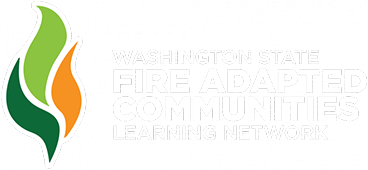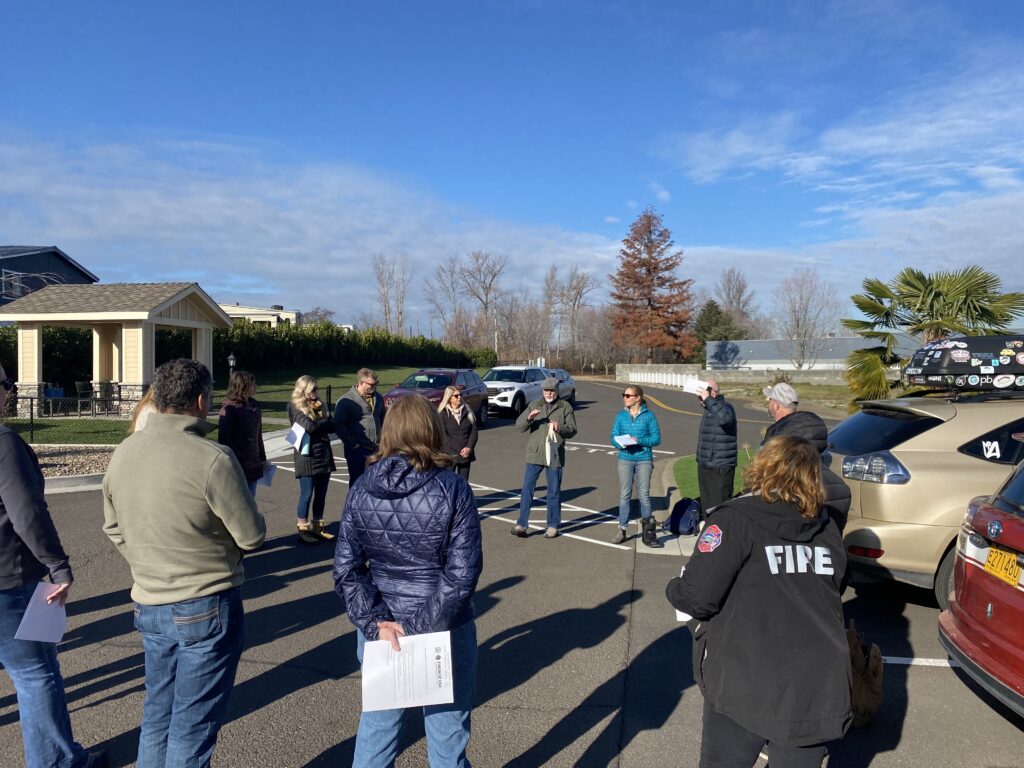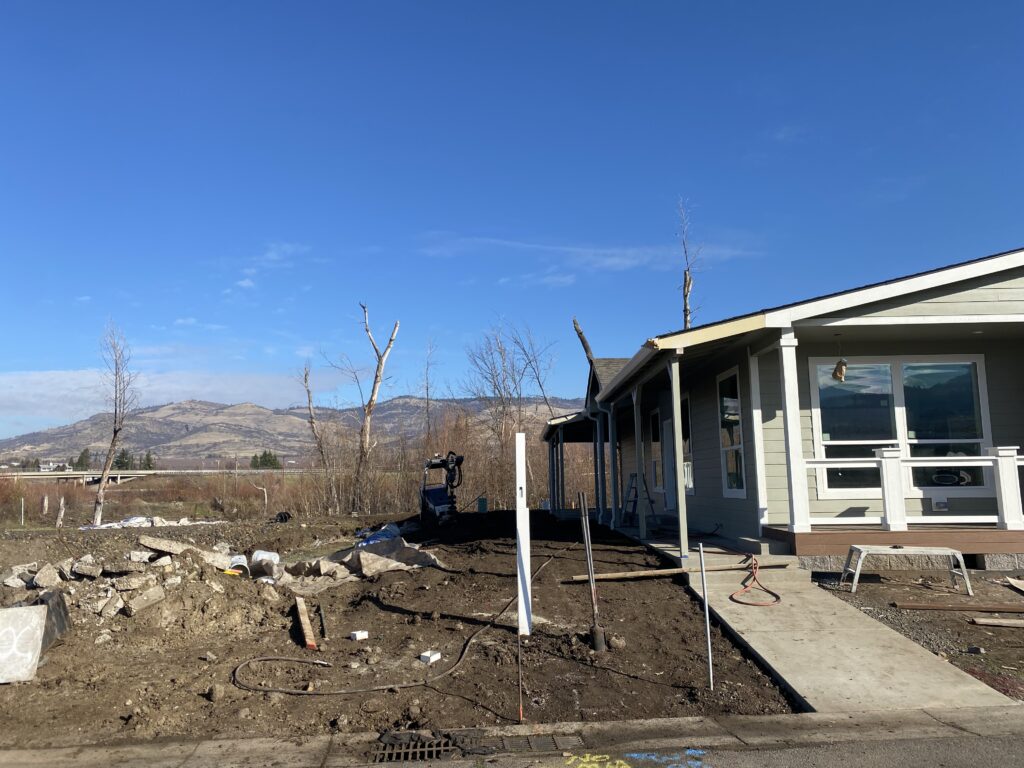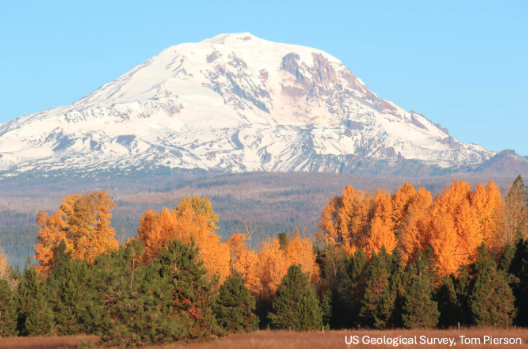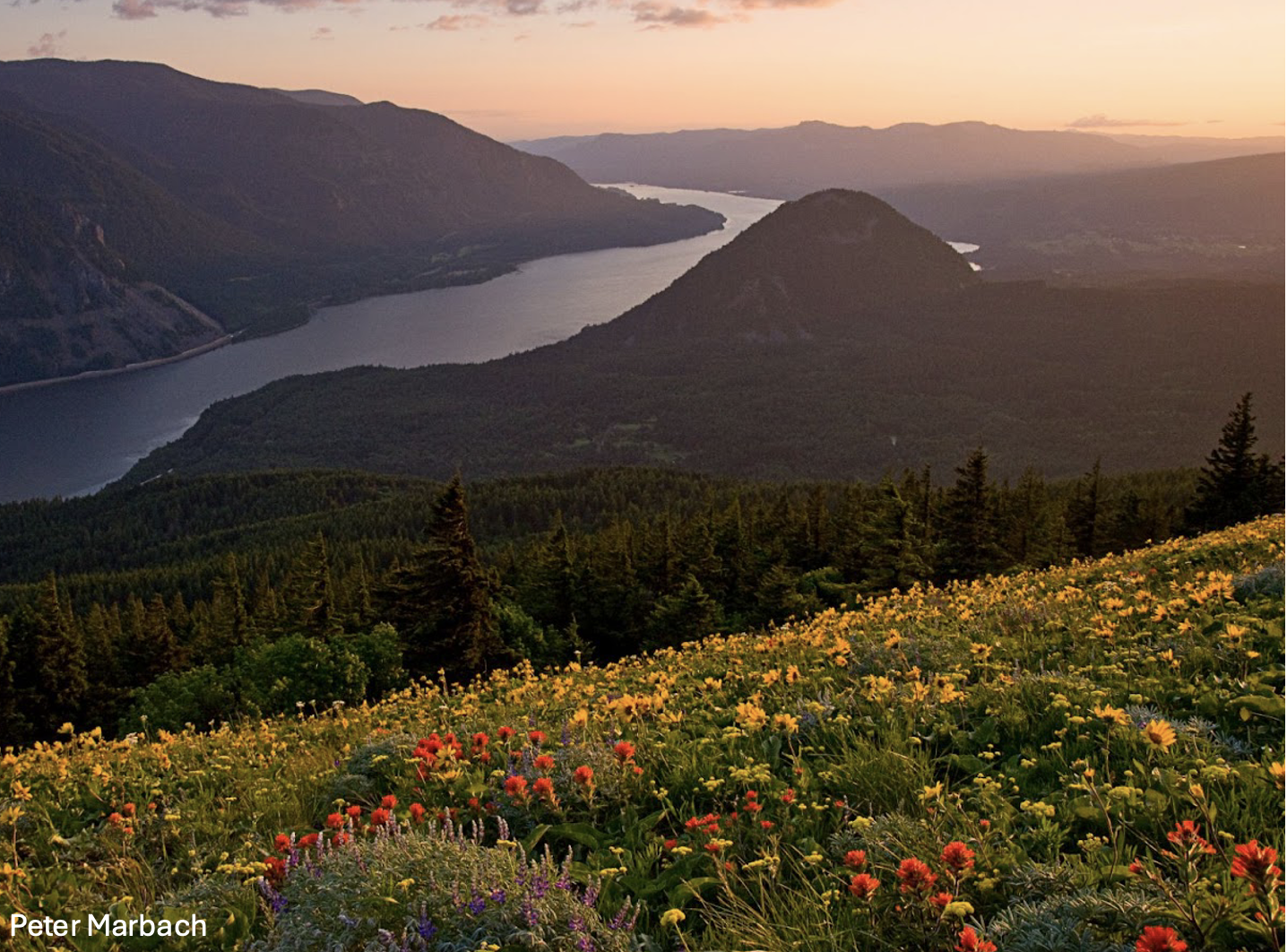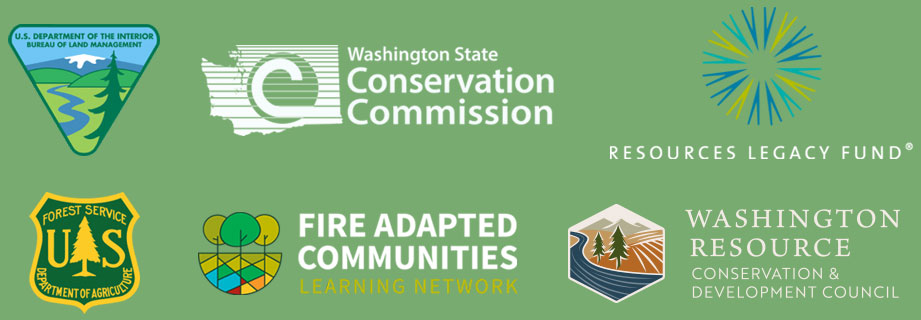For nearly a decade, a group of Fire Adapted Learning Network (FAC Net) members from the Pacific Northwest and Hawai’i – informally dubbed the “PNW Pod” – has been meeting to provide peer support and learn from one another’s wins and losses. In early December 2024, this group converged on Ashland, Oregon for a three-day learning exchange. Attendees represented six different organizations from Hawai’i, Washington, including fire and rescue departments, state agencies, and non-profits. Two representatives from WAFAC travelled to participate and contribute: WAFAC Program Manager, Keegan Fengler, and WRCD Communications Coordinator, Amelia Wells.
In September of 2020, the Rogue Valley of southwestern Oregon experienced a devastating wildfire event. The Almeda Fire ignited on the northeast edge of Ashland, and carried by fierce 50 mph winds, proceeded to engulf large parts of the cities of Talent and Phoenix to the north. Unexpectedly, the fire spread through the narrow riparian area that connects the urban centers of the Rogue Valley, not the forested hills to the west where a majority of past wildfire mitigation efforts have been focused. The proximity of neighborhoods and urban centers to the seemingly harmless Bear Creek streambed ultimately proved disastrous. Three lives and over 2,800 structures were lost.
Over the course of last month’s learning exchange, our hosts from Ashland Fire & Rescue, along with several other local community leaders, led the group through the timeline of Almeda Fire response and recovery as well as the steps the region is taking to better prepare for any future wildfires.
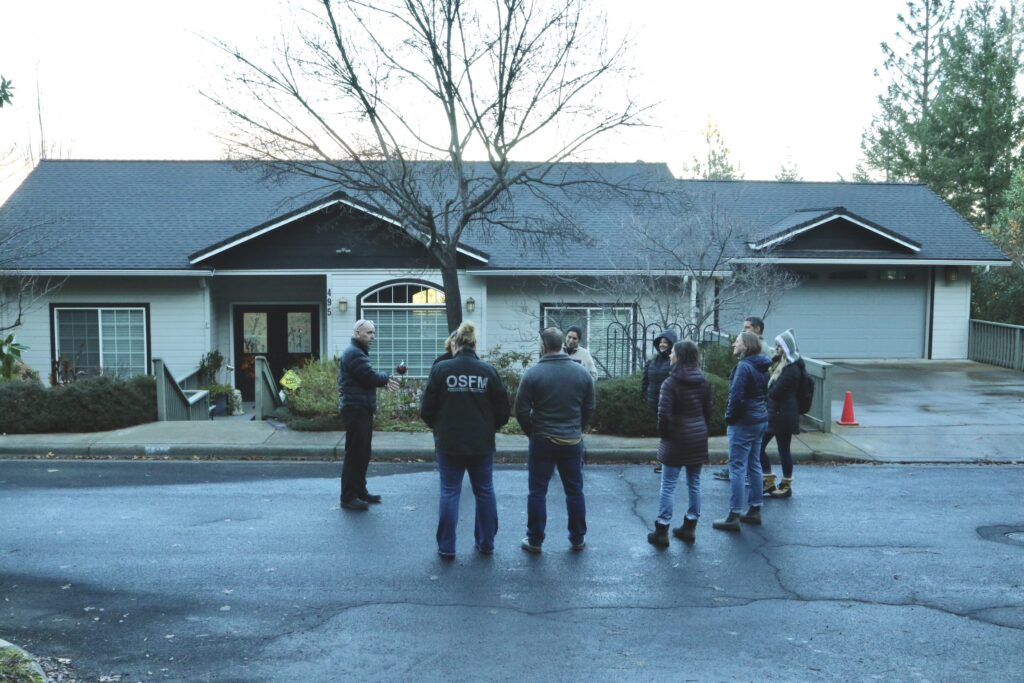
Recovery begins at the local level
Both during the response, and in the immediate stages of recovery, community groups and local residents immediately stepped in to fill the gaps where agencies and government organizations lacked resources or capacity. For example, local car companies immediately acted during the initial stages of the fire to supply vehicles to help with priority evacuations while the Rogue Valley COAD (Community Organizations Active in Disaster) assisted with food and water distribution to evacuees in the early days after the fire.
The obvious power of grassroots efforts in addressing urgent community needs was inspiring to all of us in attendance. What may have begun as reactionary, informal local recovery efforts have now evolved into more formalized initiatives, including the Jackson County Community Long Term Recovery Group (JCC LTRG) and the Firebrand Resiliency Collective (Firebrand). Our group was able to meet with Matthew Havniear, Deputy Director of JCC LTRG, and Tucker Teutsch, Executive Director of Firebrand, at the Jackson County Fire District 5 Station in Talent to hear how they approached their recovery efforts.
Over the past four years, JCC LTRG focused heavily on emotional and spiritual care for survivors of the Almeda Fire, but one of its biggest accomplishment was the creation of Rogue Reimagined, a multi-jurisdictional long term recovery plan that includes 21 projects to help unite recovery resources with remaining unmet needs. Rogue Reimagined signifies the beginning of a new dynamic across the Valley. Where relatively little coordination existed before, there is now a concerted effort to forge relationships across jurisdictions. And while capacity may be limited across the board, there is no doubt that everyone involved is wholeheartedly committed to collaboration in the name of a more resilient Rogue Valley.
As years have passed, and recovery wraps up, JCC LTRG will stand down. However, organizations like Firebrand are looking to the future, preparing for the next challenge or disaster. Firebrand’s mission from the beginning has been to find community based solutions for long term recovery. Its major programmatic accomplishment was the Almeda Fire Zone Captains program, which used public money to pay community leaders to be recovery navigators in their place. Zone captains played a vital role in connecting community members to recovery resources and advocating for their communities in public fora. More recently, the organization has shifted its focus toward what comes next. For Firebrand, it is the Ready NOW! (Neighborhoods Organized for Wildfire) program, which will build on existing community relationships to mitigate and prepare for future fire damage. Recovery may be less urgent at this point in time, but no one in the Rogue Valley is under the impression that the risk of wildfire has disappeared.
Transitioning toward building resilience
Four years after the Almeda Fire, there is a concerted effort to not just return to the status quo; rather, many communities are aiming to foster greater resilience and preparation. The Pod visited two different Firewise Communities that exemplify this proactive mindset: Mountain View Estates in Talent and Park Estates in Ashland.
Mountain View is an urban manufactured home community for people over the age of 55 that was severely damaged in the Almeda Fire. With only 21 out of 165 homes surviving, the rebuild has been a lengthy, emotional process. Key community leaders stepped up to shepherd the neighborhood through recovery and ultimately build increased resilience to wildfire. The dedication of these motivated residents has rippled through the entire neighborhood, with a majority of the community now committed to being “firewise”. This burgeoning commitment has manifested in a myriad of ways. Homes were rebuilt using fire resistant building materials, a neighborhood-wide phone tree was established, and Firewise principles have been incorporated into the community’s rules and regulations.
To the south, the residential neighborhood of Park Estates sits above the city of Ashland. Large, single family homes perch atop steep hills on forested lots. Although the neighborhood did not burn during the Almeda Fire, residents have embraced efforts to protect their community against future fires. As a Firewise community, many property owners have taken it upon themselves to complete fuels reduction projects around their homes. Prevention and mitigation may look different depending on the geographic and demographic make-up of a place, but at the heart of both of these communities is a commitment to working together to build a safer home for one another.
Planning for the future
Although the city of Ashland experienced significantly less physical damage from the fire than Talent and Phoenix, the event was no less impactful, exposing where additional planning and prevention was needed. The city has taken on several efforts to address these gaps, including an update to their Community Wildfire Protection Plan (CWPP) and in-depth evacuation planning.
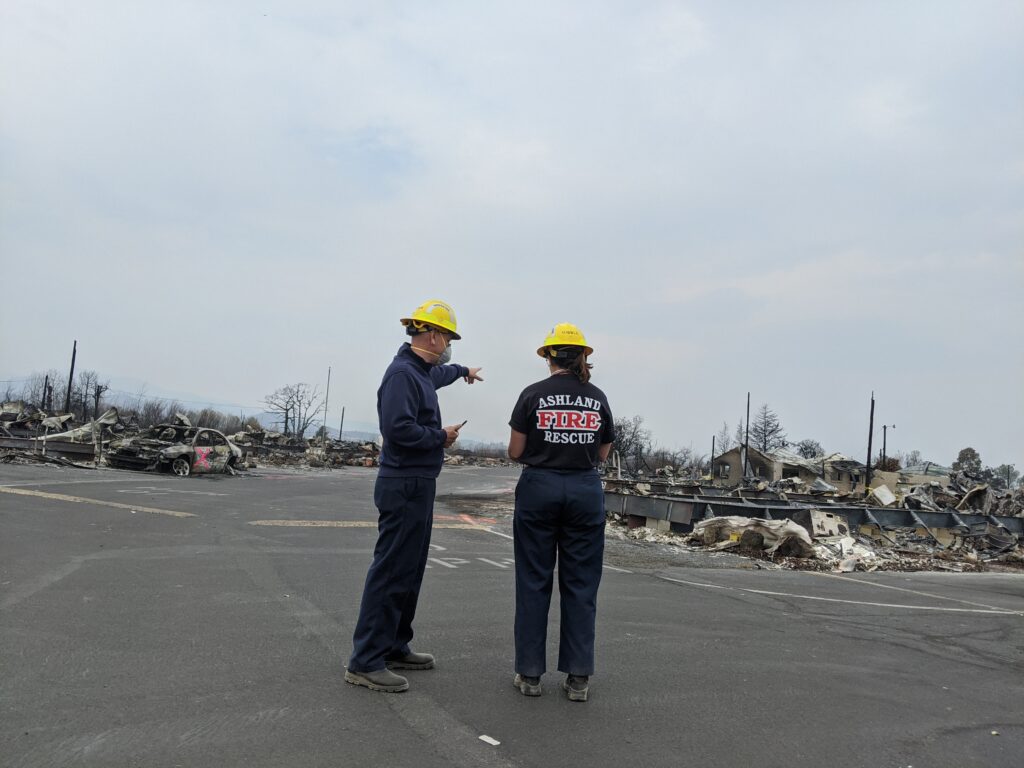
As a part of the CWPP update, Ashland is prioritizing the inclusion of “Socially Vulnerable Populations” (SVPs) in the process to ensure these community members’ needs are met and they have a say in the community’s wildfire planning. Charisse Sydoriak, a volunteer with Ashland Fire & Rescue and FAC Net member, has devoted hundreds of hours to interviewing and surveying SVPs in Ashland. Taking a “whole community” approach, the effort Charisse is spearheading aims to make sure everyone, regardless of background and income level, has the resources they need to protect their homes from wildfire. Charisse’s admirable effort as a volunteer is yet another example of the ways in which community members have stepped up in the Rogue Valley in the aftermath of the Almeda fire.
As the learning exchange wrapped up, our small group reflected on what we took away from the experience. Many attendees shared valuable practical takeaways, such as contacts, new tools, and resources. Cat Robinson, WAFAC member and Emergency Coordinator at Eastside Fire & Rescue in Issaquah, WA, is excited to incorporate what she learned into her CWPP update as well as her work more broadly. Cat says, “My experience with the FAC Net PNW Exchange has broadened my vision for wildfire mitigation, planning, and emergency management.” Ashland Fire & Rescue, along with other organizations in the area, provided Cat with new motivation to expand her program:
“I was especially inspired by the collaboration with individuals and communities that led to important work with populations that might not otherwise have access to or a voice in the recovery and planning processes. This has more deeply informed my own CWPP work and reinforced the concepts I have been proposing here in my own service area. Having tangible examples of the good work of Ashland Fire & Rescue and its partners lends credence to actualizing my own ideas into action.”
The most poignant takeaway, however, was the overwhelming sense of gratitude. There was a collective appreciation for being able to share space and engage in meaningful discussions about our work. People from within the same community even found the learning exchange a useful setting to connect, or even meet for the first time. What made this particularly powerful was the common realization that each of us understood the challenges one another face. This shared understanding made the exchange of ideas and experiences feel deeply validating and supportive.
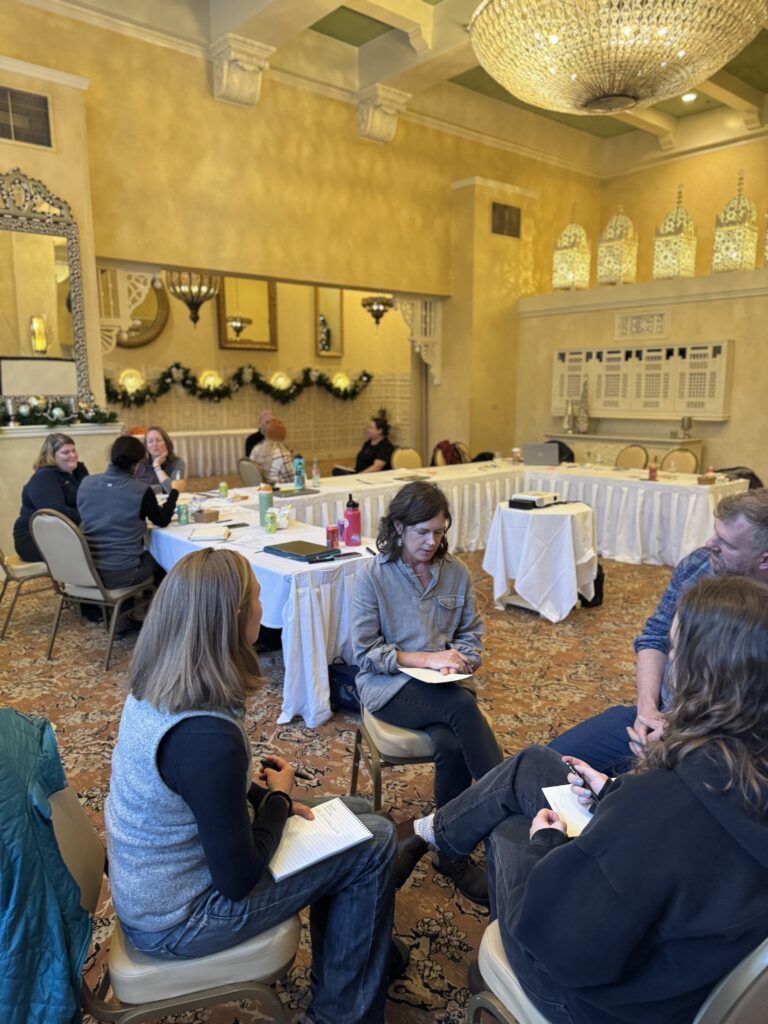
Throughout the workshop, the Pod engaged in several exercises, including Troika Consulting, a great activity to kickstart peer connections and creative problem solving. Photo: Alison Green, OSFM.
Best Practices and Lessons Learned
Recovery efforts should always be looking to incorporate community organizations that have established relationships in their place. Oftentimes, existing local groups and leaders will be able to interface more effectively with those impacted by disaster due to trust that has been built up over time. Local organizations already know what their communities need.
Take advantage of windows of opportunity to initiate collaboration and planning efforts. Although the aftermath of a disaster is chaotic and often charged with emotion, there may also be a lot of momentum to create change.
Identify the people within neighborhoods who will step up as leaders and utilize their existing relationships. If possible, find these “sparkplugs” before a disaster happens so that a network already exists when it is needed.
When rebuilding after a devastating event, don’t just focus on bringing back what was once there before. Use the opportunity to bake resilience in from the beginning rather than returning to the status quo.
